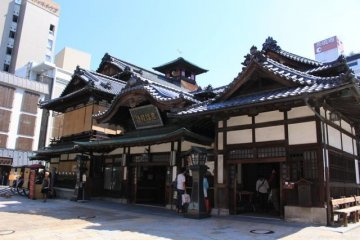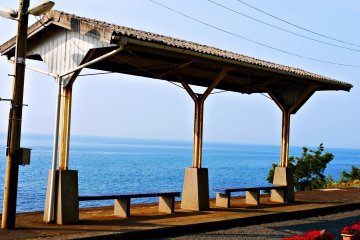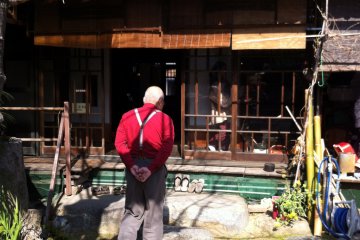Mitsu is the old port area of Matsuyama. In the old days, whenever the people of Matsuyama had to go anywhere, they would generally go to Mitsu to get on a boat. Mitsu has also been a fishing port from time immemorial, and fish are still landed here daily. This area has many fascinating and beautiful old buildings lining narrow streets, which are arranged in a regular grid. Taiya Restaurant is one such building, and it encapsulates both functions of Mitsu, as a point of departure and a place where fish is consumed.
The ‘tai’ in the name of the restaurant refers to the fish named tai—sea bream in English. This is the prefectural fish of Ehime (yes, Japan does have prefectural fish…), and sea bream cooked with rice and seasonings is eaten throughout Ehime. Taiya is a magnificent townhouse dating from 1929, although the building that preceded it was built in the Edo period. The inner garden remains much as it was in those days. However, this sort of old house is expensive to maintain, and the owner, who was born and brought up in this house, must secure an income sufficient to keep it in a presentable state. On his retirement, he resolved to cook sea bream as the solution to his heritage responsibilities, although he had no prior experience of cooking before.
I visited Taiya around three o’clock having lunched elsewhere, but I was still hungry. It was a windy day and I had to fight my way through the flapping noren curtain over the door. I poked my head inside and asked if they could serve me some tea and a little cake-y thing. The serving lady, dressed smartly in a plain kimono and pinafore, gave me a very gracious welcome and went off to check. She came back and said I could have coffee, Western tea or Japanese tea and a snack for 400 yen. That sounded just the ticket, so I took my shoes off and made my way into one of those exquisite Japanese interiors that aesthetes dream about. Shortly, the master, dressed in a plum-colored shirt and braces came to greet me. Although Taiya does have separate rooms with chairs, most guests head into the tatami room facing the garden, where everybody sits next to each other on a cushion. The master knelt opposite me, and asked if I like orange. Shortly, he served me tea, a dessert of subtly sweet mochi rice and adzuki beans, and orange slices without their inner skins. Next to me, two young men were going into ecstasies over the tai-meshi and sea bream sashimi. It looked excellent.
As I ate, the master told me about the garden. It’s an example of ishitei, or stone garden. Large stones represent a waterfall, and the footpath is a river. Close to the house is a huge, round flat stone. In the Edo period, feudal lords of the provinces were required to spend a certain amount of time in Edo, now Tokyo. The lord of Matsuyama always sailed from Mitsu, but if the sea was rough, he would drop into the better class private homes in Mitsu, which thoughtfully provided him with a nice big stone for his palanquin to be set down upon. The garden also features a rather special tree which has significance for young couples.
Background music is provided from a vintage record player, with vinyl from before I was born. It sounds great, and if I could get an MP3, I’d listen to it.











